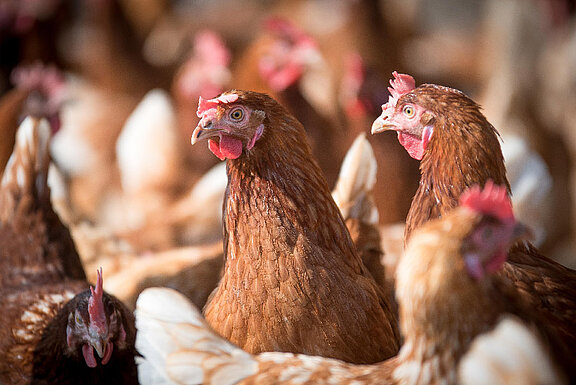Isle of Riems, 31. July 2023. The highly pathogenic avian influenza virus (HPAIV) of the subtype H5 has progressed from sporadic seasonal occurrences to a continuous and nearly global panzootic in wild birds. This raises HPAIV incursion pressure into poultry holdings, as well as the risks of secondary spread and human exposure at the poultry-human interface. Vaccination as an additional layer of protection of poultry holdings using appropriately matched vaccines aims at reducing clinical sequelae of HPAIV infection, disrupting HPAIV transmission, curtailing economic losses and animal welfare problems and cutting exposure risks of zoonotic HPAIV at the avian-human interface. A group of international scientists outlines how vaccination with zero-tolerance for infection can be achieved by usefully supplementing multiple layers of appropriate surveillance.
Recent developments towards a massively increased circulation of HPAIV in wild birds and in the poultry industry in many regions across the world have moved vaccination into focus as a complementary prevention tool in major parts of the globe. HPAI vaccination has never been successful in controlling HPAIV on its own. Biosecurity, continuous evaluation of vaccination uptake and efficacy, adequate surveillance of vaccinated flocks to ensure the freedom from field infections, and typing of detected field strains to improve vaccine design are all equally required.
Surveillance strategies that are tailored to a country's epidemiological situation (zones and compartments therein) and to the type of vaccine used must be carefully planned and implemented. In a population of vaccinated flocks, active surveillance components (e.g. serosurveys of vaccinated flocks to monitor herd immunity or assess vaccine coverage, environmental sampling at live bird markets) have higher relevance compared to unvaccinated populations for effective detection of HPAI virus or proving freedom. Yet, passive surveillance (i.e. virological analyses of diseased or dead poultry) remains crucial since it may help early detection of vaccine failures resulting in vaccinated infected flocks showing clinical signs of infection.
Scientist from Germany, the Netherlands, Italy, Indonesia and Hong Kong present their finding in the most recent issue of ‘Biologicals’.
Publication:
Harder, T., de Wit, S., Gonzales, J.L., Ho, J.H.P., Mulatti, P., Prajitno, T.Y., Stegeman, A. (2023). Epidemiology-driven approaches to surveillance in HPAI-vaccinated poultry flocks aiming to demonstrate freedom from circulating HPAIV aiming to demonstrate freedom from circulating HPAIV. DOI: 10.1016/j.biologicals.2023.101694


